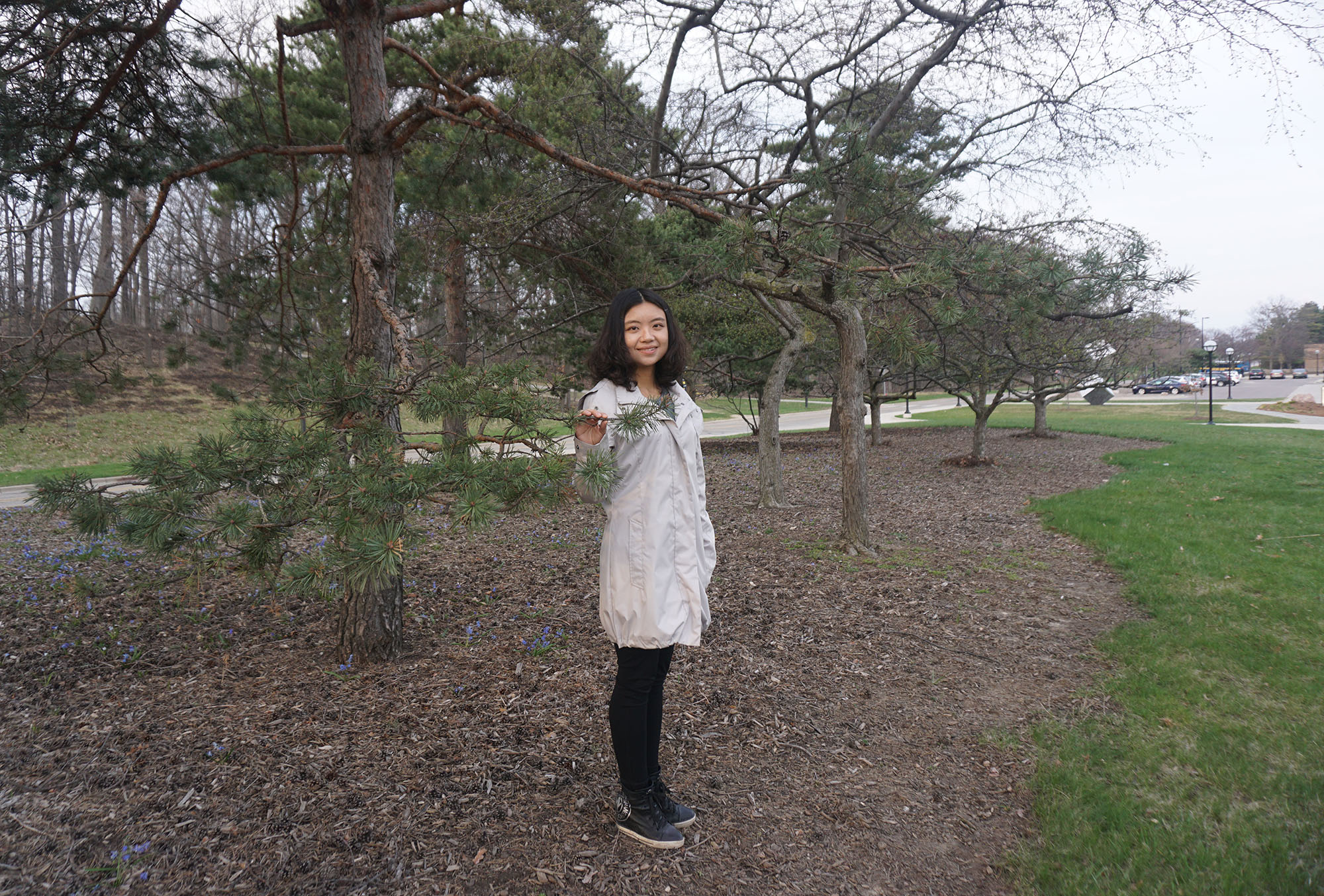Huanting Huang and the mathematical shape of trees
An award-winning modeling method will help us better understand our natural environment

 Enlarge
Enlarge
The code Huanting Huang works with might be the furthest thing from the natural world. But, because of her award-winning mathematical modeling, we will better understand our natural environment through knowing the shapes of trees.
Huang, a University of Michigan PhD candidate studying electrical and computer engineering under Professor Leung Tsang, works in remote sensing. Through the properties of water, soil, and electromagnetic waves, remote sensing enables satellites to determine how much water lies under the surface of the Earth.
Remote sensing for soil moisture works better in barren areas, such as deserts, due to a lack of obstructions from soil to space. A satellite with a clear shot, like a wide-open basketball player, has better accuracy.
Much of the world, however, is covered by vegetation, and it is these arable regions and croplands where measuring soil moisture is particularly useful for agriculture and environmental monitoring. Unfortunately, as the electromagnetic waves reflect off the soil on their way to a satellite, they bounce between water-filled leaves and limbs of plants and trees. This obscures the signal from the soil, and alters the final reading of soil moisture.
To account for the scattering of waves due to vegetation, researchers create models of plants and how they interact with radar waves to remove the interference from the soil moisture signal.
This is a complex problem, and the analytical approaches make a few assumptions to simplify the problem. One typical assumption is that the positions of trunks, branches, and leaves are uniformly distributed in a space. However, looking at a tree, we know it has a defined order with a trunk at the bottom, rising to branches that have repeated leaf patterns, and gaps between all these features.

 Enlarge
Enlarge
Huang has developed a method that paints trees more accurately using full wave simulations. By breaking down the model trees into smaller parts, the trunks and branches take their more natural, tree-shaped, positions. The smaller parts of a leaf or branch are then enclosed within spherical and spheroidal surfaces. The scattering properties of each single object can be determined by a computational technique called the T matrix approach. The T matrix of each single object can be calculated using the off-the-shelf software, such as HFSS. Not only can this approach determine the wave scattering effects of the single objects, but it can also describe the interactions between the single objects with specific equations, called Foldy-Lax multiple scattering equations.
“With conventional methods, not only are the parts of the trees uniformly distributed in the air, but entire forests,” says Huang. “That’s unrealistic, though, because trunks, branches and leaves of trees grow in a correlated structure, and trees grow in clusters. We have preliminary results showing that the full wave simulation method modeling in clusters leads to much different results than the conventional analytical method.”
Huang’s method allows for increased efficiency in modeling. The empty air where there is no vegetation, such as between branches, typically occupies more than 99 percent of the whole space. In Huang’s method, the simulation skips the empty air.
By using the T matrix, the method requires fewer unknowns compared to using the conventional approaches, which use surface fields.
With conventional methods, not only are the parts of the trees uniformly distributed in the air, but entire forests. That's unrealistic.
Huanting Huang
This means the simulation runs faster on less powerful processors than previous numerical full wave simulation methods such as the Finite Element Method for vegetation. For example, a single personal computer can use Huang’s method to solve for tens of tree branches with lots of gaps, but the same computer fails when using the previous numerical method.
For this work, Huang won the “IEEE Antennas and Propagation Society Ulrich L. Rohde Innovative Conference Paper Award on Computational Techniques in Electromagnetics” at ICCEM 2018 in March. Her paper is titled “Numerical 3D Solutions of Maxwell Equations Based on a Hybrid Method Combining Generalized T Matrix and Foldy-Lax Multiple Scattering Equations for Vegetation/Trees Scattering.”
“We’re still at the beginning steps,” says Huang. “We plan to simulate a whole forest, but we’ll need to use more powerful computing with parallelization.”
Combining greater computing power with her more efficient approach, Huang might be able to tell us more about what’s happening in the ground from a satellite than we know living on top of it.
 MENU
MENU 
